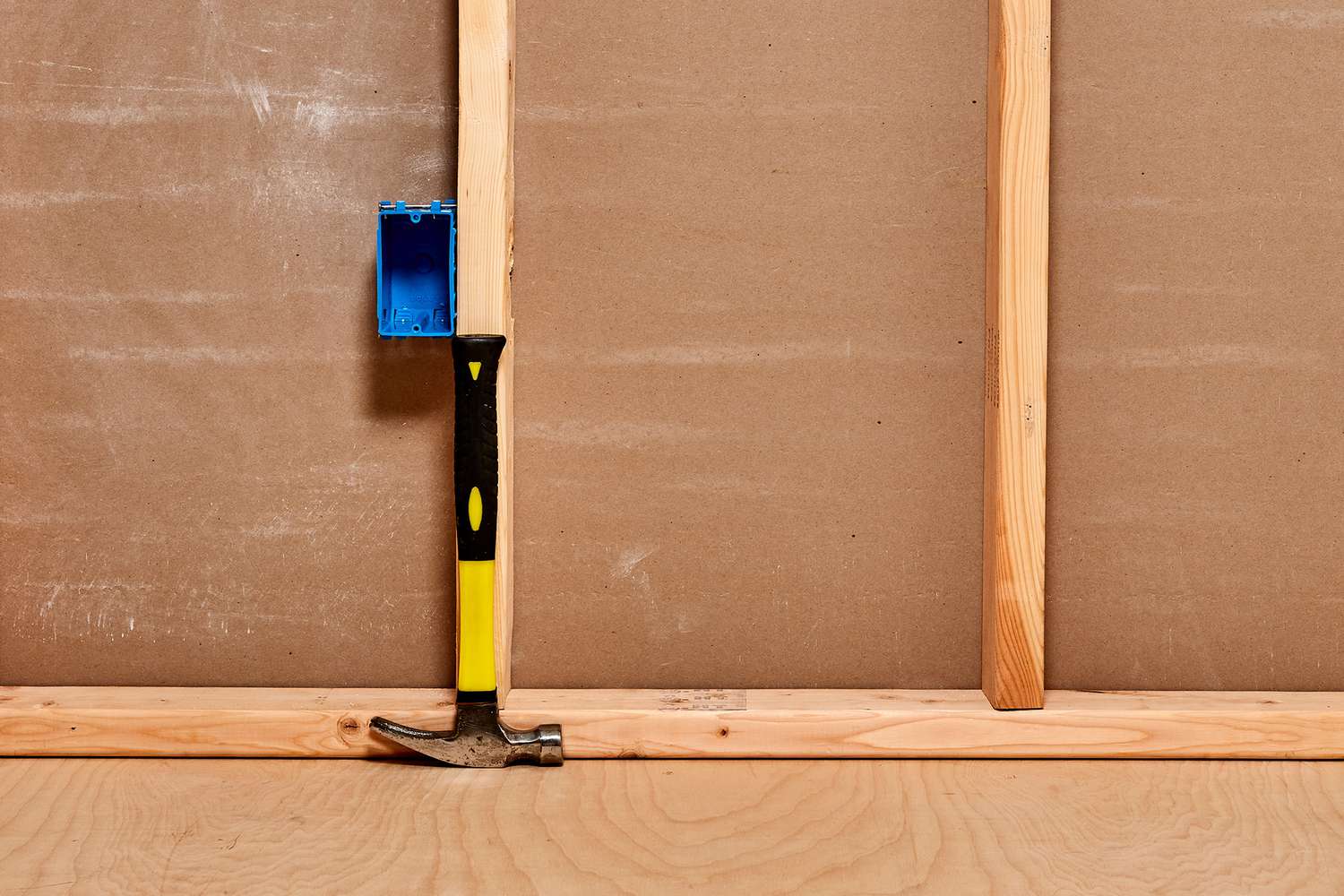

Articles
How High Are the Outlets From The Floor
Modified: February 22, 2024
Learn about the ideal height for outlets from the floor in our comprehensive articles. Find out the best practices to ensure safety and convenience in your home.
(Many of the links in this article redirect to a specific reviewed product. Your purchase of these products through affiliate links helps to generate commission for Storables.com, at no extra cost. Learn more)
Introduction
When it comes to electrical outlets in our homes, we often don’t give them much thought. We rely on them to power our appliances, charge our devices, and keep our lives running smoothly. However, there may be instances where the height of the outlets becomes a concern. You may find yourself in a situation where the outlets are too low or too high, causing inconvenience or potential safety hazards. This article will explore the topic of outlet height and provide useful information on adjusting outlet heights to accommodate your needs.
Purpose of the article
The purpose of this article is to help homeowners and DIY enthusiasts understand the importance of outlet height, the standard measurements, and the factors to consider when adjusting the height of outlets. By providing practical techniques and cost considerations, this article aims to empower readers to make informed decisions about outlet height adjustments.
Overview of the content
The article will begin by explaining the significance of outlet height and how it affects the functionality and aesthetics of a space. It will then delve into the standard outlet height measurements typically found in residential buildings. Next, the article will explore the various factors to consider when deciding to adjust the height of outlets, including building codes, accessibility guidelines, and personal preferences. It will then provide techniques for adjusting outlet height, such as electrical box adjustments, extending wiring and outlets, and utilizing outlet extenders. Additionally, the article will discuss the cost and safety considerations associated with adjusting outlet height, including when it’s necessary to hire a professional electrician or when DIY options are feasible. Finally, the article will conclude by summarizing the key takeaways and emphasizing the importance of maintaining safe and accessible outlet heights in our homes.
Key Takeaways:
- Outlet height is crucial for safety, accessibility, and aesthetics. Understanding standard measurements and considering factors like building codes and personal preferences is essential for informed adjustments.
- Hiring a professional electrician is recommended for adjusting outlet height. DIY options can be considered for minor adjustments, but safety precautions and compliance with regulations are paramount.
Purpose of the Article
The purpose of this article is to guide readers through the process of understanding outlet height and provide practical information on adjusting outlet heights in various settings. Whether you are a homeowner looking to renovate your space or a DIY enthusiast seeking to make electrical adjustments, this article will help you navigate the considerations involved in determining the ideal height for your outlets.
The primary objective of discussing outlet height is to address the common issues and challenges that arise when outlets are either too high or too low. By understanding the importance of outlet height, readers will be able to identify potential problems and make informed decisions regarding the necessary adjustments.
This article aims to educate readers about the standard measurements for outlet height found in residential dwellings and the factors to take into account when making changes. By providing this information, readers can ensure that outlets meet the necessary regulations, accessibility guidelines, and personal preferences. Additionally, the article will offer practical techniques for adjusting outlet height, allowing readers to explore various options that suit their specific needs.
It is essential to highlight the cost and safety considerations associated with adjusting outlet height. By offering insights into hiring professional electricians versus do-it-yourself (DIY) solutions, readers can make informed choices that balance their budget and safety requirements.
Ultimately, the purpose of this article is to empower readers with knowledge and resources to overcome challenges related to outlet height. It recognizes that outlet height adjustments may be necessary for both functional and aesthetic reasons, and it provides readers with the tools and guidance to navigate the process successfully.
By the end of this article, readers will have a comprehensive understanding of the importance of outlet height, the standard measurements, and the factors to consider when adjusting the height of outlets. Armed with this knowledge, readers can confidently undertake outlet height adjustments that enhance the functionality and safety of their living spaces.
Overview of the Content
This article will provide a comprehensive exploration of outlet height, addressing the key aspects and considerations that homeowners and DIY enthusiasts need to understand. The content will be organized into several sections, each focusing on different aspects of outlet height.
Read more: How High Should Vanity Outlets Be
Understanding Outlet Height
The first section will dive into the fundamentals of outlet height, emphasizing its importance for both functionality and aesthetics in a space. It will discuss why outlet height matters and how it can impact the ease of access, safety, and overall convenience for users.
The section will also cover the standard outlet height measurements typically found in residential buildings. It will detail the recommended heights for both general-purpose outlets and special-use outlets, such as those used in kitchens, bathrooms, and other specific areas. Readers will gain insights into why these height measurements are established and how they align with safety standards and building codes.
In addition to the standard measurements, the section will touch upon variations in outlet height preferences. It will explore scenarios where homeowners may desire deviations from the standard heights, considering personal preferences and functional requirements.
Factors to Consider
Building upon the understanding of outlet height, this section will focus on factors to consider when determining the ideal height for outlets. It will cover building codes and regulations, providing insights into national and local standards that regulate outlet placement and height. Readers will gain a clear understanding of the legal requirements they need to adhere to when making adjustments.
The section will also highlight the importance of considering accessibility guidelines, particularly those outlined by the Americans with Disabilities Act (ADA). It will discuss the specific requirements for outlets in accessible spaces and how to ensure compliance with these guidelines.
Furthermore, this section will explore personal preferences and needs as significant factors in determining outlet height. It will delve into considerations such as the height and reachability of individuals using the outlets, the location and type of electrical appliances that may require specific outlet heights, and any specific requirements for accommodating personal circumstances or disability needs.
By examining all these factors, readers will be equipped to make informed decisions about the ideal outlet height for their specific situation.
Importance of Outlet Height
Outlet height may seem like a minor detail in the grand scheme of home design, but it plays a vital role in ensuring the functionality, safety, and overall convenience of electrical systems. Understanding the importance of outlet height is essential for homeowners, electricians, and DIY enthusiasts alike. Let’s explore why outlet height matters.
1. Safety: The safety of occupants is paramount when it comes to electrical systems. Outlet height plays a crucial role in reducing the risk of accidents and electrical hazards. By placing outlets at the appropriate height, the chances of tripping over cords or accidentally unplugging devices are minimized.
2. Accessibility: Outlet height is a key consideration for ensuring accessibility, particularly for individuals with disabilities or mobility challenges. Properly positioned outlets at accessible heights allow everyone, regardless of their physical abilities, to easily access and use electrical appliances.
3. Convenience: The usability and convenience of electrical outlets are greatly influenced by their height. Outlets placed too high may require the use of step stools or ladders, making it difficult to plug in and unplug devices. On the other hand, outlets placed too low could impede furniture placement or create visual clutter with cords trailing on the floor. The ideal outlet height strikes a balance between ease of use and aesthetics.
4. Room Layout and Functionality: Outlet height is closely tied to the layout and functionality of a space. The placement of outlets at appropriate heights enables efficient use of electrical devices, such as televisions, lamps, and kitchen appliances. It allows for optimal cord management and minimizes the need for unsightly extension cords or awkward arrangements to accommodate different outlet heights.
5. Compliance with Building Codes: Building codes and regulations stipulate specific requirements for outlet height in residential and commercial buildings. These codes are in place to ensure electrical safety and uniformity across different structures. Adhering to these standards is essential for maintaining compliance, passing inspections, and avoiding any potential legal issues.
6. Aesthetics: Outlet height also plays a role in the overall aesthetics of a space. Well-placed outlets that align with the design and flow of the room contribute to a clean and organized appearance. They minimize visual distractions and allow furniture and other structural elements to be positioned without obstruction.
Overall, outlet height is a crucial consideration that impacts safety, accessibility, convenience, functionality, legal compliance, and aesthetics. By understanding its significance and considering it thoughtfully, homeowners and electricians can ensure that outlets are positioned at the optimal height to meet the needs of occupants and enhance the overall electrical system of a building.
Standard Outlet Height Measurements
Standard outlet height measurements have been established to ensure consistency and safety in residential buildings. These measurements serve as a guideline for electricians, builders, and homeowners when installing outlets. Let’s explore the typical measurements for outlet height.
In most residential settings, the standard height for general-purpose outlets is around 12 to 16 inches above the floor. This height strikes a balance between accessibility and aesthetics. It allows for easy access to outlets without requiring users to reach down or crouch low.
In specific areas with unique electrical requirements, such as kitchens and bathrooms, different outlet height measurements may apply. In kitchens, where countertops are a primary workspace, outlets are usually positioned at a height of around 4 to 6 inches above the countertop surface. This placement allows for convenient access to power sources for small appliances and eliminates the need for extension cords.
In bathrooms, outlets are typically installed at a similar height to those in the rest of the house, approximately 12 to 16 inches above the floor. However, special considerations are taken to ensure that outlets located near water sources, such as near sinks or bathtubs, are protected by ground fault circuit interrupters (GFCIs) to prevent electrical shocks.
It’s important to note that these are general guidelines for standard outlet height measurements, but they can vary depending on local building codes and regulations. Building codes may stipulate specific measurements or provide flexibility within certain ranges. It is advisable to consult local codes or seek professional advice when installing or adjusting outlet heights to ensure compliance.
Read more: How High Should Windows Be From The Floor
Factors to Consider
When determining the appropriate outlet height for a specific space, several factors should be taken into consideration. These factors include building codes and regulations, accessibility guidelines, and personal preferences or specific needs.
Building Codes and Regulations: Local building codes dictate the requirements for electrical installations, including outlet height. These codes are in place to ensure safety and standardization. It is crucial to familiarize yourself with the applicable codes in your area to avoid any regulatory issues and potential hazards.
Accessibility Guidelines: Considering accessibility guidelines, such as those outlined by the Americans with Disabilities Act (ADA), is important to ensure that outlets are accessible for individuals with disabilities or limited mobility. These guidelines provide specific recommendations for outlet positioning and height in accessible spaces, ensuring inclusivity and ease of use for everyone.
Personal Preferences and Specific Needs: Personal preferences and specific needs can also influence the choice of outlet height. Factors such as the height and reachability of household members, the type of electrical devices being used, and any unique circumstances or requirements should be taken into account. For instance, individuals with back pain or mobility issues may prefer outlets at a higher height to minimize bending or reaching.
By considering these factors, homeowners can ensure that outlet height aligns with safety regulations, accessibility considerations, and individual needs. It is important to strike a balance between functionality, safety, and personal preferences when determining the ideal outlet height for each space.
Building Codes and Regulations
Building codes and regulations play a crucial role in ensuring the safety and functionality of electrical systems in residential and commercial buildings. When it comes to outlet height, adhering to these codes is essential to maintain compliance and minimize potential hazards. Let’s explore the importance of building codes and regulations regarding outlet height.
1. Safety Standards: Building codes establish safety standards that electrical systems must adhere to. These codes are designed to prevent electrical shocks, fires, and other hazards. Compliance with outlet height regulations ensures that outlets are installed at a safe and appropriate distance from the floor and other objects that could pose a risk.
2. Consistency and Uniformity: Building codes promote consistency and uniformity throughout the construction industry. They provide standardized guidelines for outlet height measurements, ensuring that electrical systems meet a minimum standard of safety and accessibility in both residential and commercial buildings.
3. Legal Compliance: Building codes are legally enforceable regulations that must be followed when constructing or renovating a building. Failure to comply with these codes can lead to legal consequences, including fines or delays in obtaining permits or certificates of occupancy. Adhering to outlet height regulations helps avoid potential legal issues during inspections or when selling a property.
4. Electrical System Efficiency: Building codes also take into consideration the efficiency and functionality of electrical systems. Outlet height regulations are designed to optimize the placement of outlets and electrical appliances. Proper placement ensures efficient and convenient access to power sources, reducing the need for extension cords or compromising the aesthetics of the space.
5. Liability and Insurance: Non-compliance with building codes, including regulations related to outlet height, can result in potential liability issues and insurance complications. In the event of an accident or electrical malfunction, insurance claims may be affected if it’s determined that the electrical system did not meet code requirements. Compliance with regulations helps protect homeowners, landlords, and businesses from unnecessary risks and liabilities.
Building codes and regulations regarding outlet height can vary by jurisdiction, so it’s important to consult local building authorities or professionals familiar with local codes. These codes are periodically updated to incorporate advancements in technology, safety standards, and accessibility guidelines. Staying informed and ensuring compliance not only enhances the safety and functionality of electrical systems but also promotes the overall well-being and longevity of the built environment.
Accessibility and ADA Guidelines
When it comes to outlet height, it’s important to consider accessibility guidelines, particularly those outlined by the Americans with Disabilities Act (ADA). These guidelines establish standards for creating accessible spaces that accommodate individuals with disabilities. Let’s explore the significance of accessibility and ADA guidelines in relation to outlet height.
1. Ensuring Inclusivity: Accessibility guidelines aim to ensure that individuals with disabilities have equal access to facilities and services. Outlet height is a crucial aspect of accessibility because it directly affects the usability of electrical systems for people with mobility challenges, wheelchair users, or individuals who rely on assistive devices.
2. Reach Ranges: ADA guidelines provide specific recommendations for outlet height to accommodate individuals with varying reach ranges. The guidelines specify that outlets should be positioned between 15 inches and 48 inches above the finished floor. This range allows for accessibility for individuals who use wheelchairs or have limited mobility, enabling them to easily reach and use electrical outlets without excessive stretching or bending.
3. Required Placement: ADA guidelines also address the specific placement of outlets in accessible spaces. Outlets are required to be placed at accessible locations throughout a building to ensure individuals with disabilities can access them conveniently. This includes locations such as common areas, restrooms, bedrooms, and workspaces.
4. Accessibility Clearances: ADA guidelines also consider the clearances around outlets to ensure unobstructed access. Adequate clearances around outlets facilitate the use of assistive devices, such as plug adapters or extension cords, and reduce the risk of entanglement or accidental disconnection of devices.
5. Tactile Identification: Apart from outlet height, accessibility guidelines may also require tactile identification of outlets to assist individuals with visual impairments. This involves providing tactile markers or labels adjacent to outlets to help individuals locate and differentiate them by touch.
By following ADA guidelines, individuals with disabilities can have equal access to electrical outlets, promoting independence and inclusivity. It’s important to consult local accessibility codes and regulations in conjunction with ADA guidelines, as regulations may vary between jurisdictions. Compliance with these guidelines ensures that outlets are positioned at appropriate heights and in accessible locations, effectively addressing the needs of individuals with disabilities.
When renovating or constructing a building, it is advisable to consult with professionals experienced in ADA compliance to ensure that outlet height and placement meet the necessary standards. By considering accessibility guidelines, homeowners, businesses, and builders can create spaces that are welcoming, functional, and usable for individuals of all abilities.
Personal Preferences and Needs
When it comes to outlet height, personal preferences and specific needs can play a significant role in determining the ideal height for outlets. While there are standard measurements and accessibility guidelines to consider, it’s important to take individual circumstances and preferences into account. Let’s explore the impact of personal preferences and needs on outlet height.
1. Height and Reachability: Individual height and reachability are important factors to consider when determining outlet height. Taller individuals may prefer outlets positioned higher to minimize bending or reaching down. Similarly, individuals with limited mobility or back problems may find it more comfortable to have outlets at a higher height. On the other hand, shorter individuals or children may prefer outlets positioned lower for easier access.
2. Specific Electrical Devices: The type of electrical devices being used in a space can influence outlet height preferences. For example, if you regularly use large appliances or equipment that require a direct connection to an outlet, you might prefer outlets placed lower or at specific heights to accommodate these devices without the need for extension cords or adapters.
3. Furniture and Room Layout: Personal preferences for furniture placement and room layout can also impact outlet height decisions. If you have particular preferences for where furniture is positioned against walls, it may be necessary to adjust outlet height to ensure the furniture does not obstruct access to the outlets or create visual clutter with cords trailing across the floor.
4. Child Safety: If there are young children in the household, outlet height may need to be adjusted to ensure their safety. Installing childproof outlet covers or placing outlets at a height that is out of reach can help prevent accidents and the risk of electrical shocks.
5. Aesthetics: Personal aesthetic preferences can also influence outlet height decisions. Some individuals may prefer outlets to be inconspicuous and blend seamlessly into the walls, while others may appreciate the convenience of outlets being more visible and easily accessible.
Ultimately, the ideal outlet height is a matter of personal preference and specific needs. It’s important to strike a balance between functionality, safety, and aesthetics to create a space that meets your requirements and enhances your overall experience.
Techniques for Adjusting Outlet Height
Adjusting outlet height may be necessary when renovating a space or accommodating individual preferences and needs. Here are some techniques that can be used to adjust outlet height:
1. Electrical Box Adjustments: In some cases, electrical boxes can be raised or lowered within the wall to change the height of outlets. This technique requires careful consideration of wiring and safety measures, and it is recommended to seek the assistance of a licensed electrician for such adjustments.
2. Extending Wiring and Outlets: Another technique involves extending the wiring and outlets to accommodate different heights. This can be achieved by adding outlet extenders or utilizing surface-mounted conduit systems to extend electrical circuits and position the outlets at the desired height.
3. Using Outlet Extenders: Outlet extenders are devices that can be added to existing outlets to increase their height or bring them forward. These extenders can provide flexibility in adjusting the outlet height without the need for major electrical modifications.
It’s essential to note that adjusting outlet height involves working with electrical systems, which can be hazardous if not done properly. If you are not experienced or comfortable with electrical work, it is recommended to hire a professional electrician to ensure the safety and compliance of the adjustments.
By considering personal preferences and specific needs, along with the use of appropriate techniques and professional assistance, homeowners can achieve outlet heights that align with their individual requirements and enhance the functionality and aesthetics of their living spaces.
Electrical Box Adjustments
Electrical box adjustments are a technique used to change the height of outlets within a wall. This method involves raising or lowering the electrical box, which holds the outlet and provides the connection to the electrical wiring. By adjusting the position of the electrical box, outlet height can be modified to better suit personal preferences and specific needs. Here is a closer look at electrical box adjustments for adjusting outlet height:
1. Consulting an Electrician: It is important to consult with a licensed electrician before attempting any electrical box adjustments. Electricians have the expertise and knowledge to ensure the adjustments are done correctly and in compliance with electrical codes and safety regulations. They can assess the feasibility of the adjustments and provide guidance on the best approach.
2. Assessing Wiring Requirements: Before making any adjustments, the electrician will assess the existing electrical wiring to determine if it can accommodate the desired changes in outlet height. Extending or relocating wiring may be necessary in some cases, which can add complexity to the adjustment process.
3. Safety Considerations: Safety is of utmost importance when working with electrical systems. Electricians will take the necessary precautions to ensure the power to the electrical circuit being adjusted is turned off. They will also pay attention to proper grounding, wiring connections, and insulation to avoid any electrical hazards.
4. Raising the Electrical Box: To raise the electrical box, the electrician will detach the outlet and remove the box from the wall. They will then add extension pieces to increase the height of the box and reattach it at the desired level. This may involve extending wiring connections to reach the new height of the box.
5. Lowering the Electrical Box: Conversely, to lower the electrical box, the electrician will detach the outlet and remove the box from the wall. They will cut the opening in the wall to accommodate a new, lower box position. The wiring will be adjusted to fit the lower box position and reconnected accordingly.
6. Ensuring Compliance: It is crucial to ensure that the electrical box adjustments comply with local building codes and regulations. The electrician will validate that the adjustments meet the required standards to maintain safety and pass any necessary inspections.
Electrical box adjustments can be a complex task that requires knowledge of electrical systems and safety procedures. It is highly recommended to hire a professional electrician to handle these adjustments to ensure the work is done safely and in compliance with electrical codes. Electricians can provide expert advice, assess the feasibility of the adjustments, and complete the work with the necessary skill and precision.
By utilizing electrical box adjustments, homeowners can achieve the desired outlet height that suits their personal preferences or specific needs. Professional assistance ensures that the adjustments are done correctly, providing a safe and reliable electrical system in the home.
The standard height for electrical outlets from the floor is 12-16 inches. However, it’s important to check local building codes for specific requirements in your area.
Extending Wiring and Outlets
Extending wiring and outlets is a technique used to adjust the height of outlets when the existing wiring is unable to accommodate a change in height. This approach involves extending the electrical circuits and positioning the outlets at the desired height to better suit personal preferences or specific needs. Here’s a closer look at extending wiring and outlets for adjusting outlet height:
1. Assessing Feasibility: Before attempting to extend wiring and outlets, it is important to assess the feasibility of the project. This involves evaluating the existing electrical system, including the current wiring configuration, circuit load capacity, and the availability of accessible areas for wiring modifications.
2. Consulting an Electrician: It is highly recommended to consult with a licensed electrician for extending wiring and outlets. Electricians have the expertise to assess the electrical system and determine the best approach for extending the wiring and outlets safely and in compliance with electrical codes and regulations.
3. Adjusting Circuit Load Capacity: Extending wiring and outlets may require increasing the circuit load capacity to handle the additional electrical load. The electrician will assess the existing circuits and make any necessary upgrades to ensure the extended circuits can safely support the intended usage.
4. Running New Wiring: In cases where extending the existing wiring is not feasible, an electrician may need to run new wiring to reach the desired outlet height. This could involve accessing crawl spaces, attics, or other areas where the wiring can be routed discreetly to avoid unnecessary damage to walls or architectural finishes.
5. Installing New Outlets: After extending the wiring, the electrician will install new outlets at the desired height. These outlets will be connected to the extended wiring and positioned to meet the specific height requirements. The type of outlet boxes used will depend on the location and wiring configuration.
6. Ensuring Compliance: It is essential to ensure that the extended wiring and outlets comply with local building codes and regulations. The electrician will ensure that the work meets the required safety standards and arrange for any necessary inspections to verify compliance.
7. Professional Assistance: Extending wiring and outlets can be a complex and potentially hazardous task. It is crucial to hire a professional electrician who is experienced in performing these modifications. They have the knowledge, skills, and tools to execute the project safely and efficiently.
Extending wiring and outlets provides the flexibility to adjust the height of outlets according to personal preferences or specific needs. By consulting with a professional electrician and ensuring compliance with electrical codes, homeowners can achieve the desired outlet height while maintaining a safe and reliable electrical system.
Using Outlet Extenders
Outlet extenders are devices that can be installed on existing outlets to increase their height or bring them forward. This technique is a convenient and cost-effective way to adjust outlet height without the need for extensive electrical rewiring or modifications. Here’s a closer look at using outlet extenders for adjusting outlet height:
1. Understanding Outlet Extenders: Outlet extenders are accessories designed to fit onto existing outlets. They effectively raise the outlet height by adding extra space between the outlet and the wall surface. Outlet extenders come in various sizes and styles to accommodate different outlet types and situations.
2. Easy Installation: Installing outlet extenders is a relatively straightforward process that can often be done as a do-it-yourself (DIY) project. They typically require removing the outlet cover plate, attaching the extender onto the existing outlet, and reinstalling the cover plate. It is important to follow the manufacturer’s instructions and ensure that the extender is securely attached.
3. Height Adjustment: Outlet extenders come in different thicknesses, allowing for flexibility in adjusting outlet height. By selecting extenders of the appropriate thickness, users can achieve the desired outlet height to meet their preferences or specific needs. It’s important to note that extending the outlet height too much may require longer screws to securely fasten the outlet cover plate.
4. Cost-Effective Solution: Using outlet extenders is often a cost-effective solution compared to other methods of adjusting outlet height. They are relatively inexpensive and readily available at hardware stores or online retailers. DIY installation can save on labor costs, making outlet extenders a budget-friendly option for adjusting outlet height.
5. Considerations for GFCI Outlets: It is important to note that outlet extenders may not be suitable for ground fault circuit interrupter (GFCI) outlets, which are commonly used in spaces where electrical devices may come into contact with water. GFCI outlets have additional safety features and may require specific extensions or replacements to maintain compliance and safety standards.
Cost and Safety Considerations
When adjusting outlet height, it’s important to consider both the cost and safety implications of the chosen method, including using outlet extenders:
1. Cost Considerations: Using outlet extenders is generally a cost-effective option for adjusting outlet height. Compared to other methods like extending wiring or raising/lowering electrical boxes, outlet extenders are inexpensive and can be installed without professional assistance, saving on labor costs.
2. Safety Precautions: While installing outlet extenders is a relatively simple process, it is still important to follow safety precautions. It is recommended to turn off the power to the outlet at the circuit breaker before working on the electrical components. Additionally, ensure that the extender is securely attached and that all electrical connections are made correctly to prevent any hazards or malfunctioning outlets.
3. Compliance with Regulations: When adjusting outlet height, it is crucial to ensure that the modifications comply with local building codes and regulations. Ensure that the outlet extenders meet any height requirements specified in the codes and that the installation is done in a way that maintains electrical safety standards.
4. Professional Assistance: While outlet extenders can typically be installed as a DIY project, if you are unsure about electrical work or if there are complexities involved, it is recommended to hire a licensed electrician. Electricians have the expertise to ensure compliance with electrical codes, address any potential issues, and provide expert installation.
Outlet extenders offer an affordable and accessible solution for adjusting outlet height. By considering cost considerations, following safety precautions, and adhering to electrical regulations, homeowners can achieve the desired outlet height while maintaining a safe and functional electrical system.
Hiring a Professional Electrician
When it comes to adjusting outlet height or any electrical work, hiring a professional electrician is highly recommended. Electricians have the knowledge, expertise, and experience to ensure that the work is done safely, efficiently, and in compliance with electrical codes and regulations. Let’s explore the importance of hiring a professional electrician:
1. Safety: Electrical work can be hazardous if not handled correctly. Professional electricians prioritize safety and follow proper procedures to minimize risks. They are trained to handle potential electrical hazards, such as exposed wiring or faulty connections, and have the necessary tools and equipment to ensure a safe working environment.
2. Expertise and Knowledge: Professional electricians have extensive knowledge of electrical systems and components. They understand the complexities involved in adjusting outlet height and can provide guidance on the best approach for each specific situation. Their expertise ensures that the work is done correctly and meets the required standards.
3. Compliance with Codes and Regulations: Electricians are well-versed in local building codes and regulations pertaining to electrical work. They stay up-to-date with any changes in codes and ensure that the adjustments made to outlet height meet the necessary requirements. Compliance with codes and regulations is essential for passing inspections and maintaining a safe and legal electrical system.
4. Efficient and Timely Completion: Professional electricians have the skills and experience to complete the work efficiently and within a reasonable timeframe. They understand the importance of minimizing disruptions to your daily routine and can plan and execute the project accordingly to meet your needs and timetable.
5. Troubleshooting and Problem-Solving: Electrical work can involve troubleshooting and resolving unexpected issues that may arise during the process. Professional electricians have the expertise to identify problems and find appropriate solutions. Their problem-solving skills ensure that any unforeseen complications are addressed effectively.
6. Warranty and Insurance: Hiring a professional electrician often comes with the benefit of warranties on both the materials used and the work performed. This provides peace of mind, knowing that any potential issues can be addressed without incurring additional costs. Additionally, professional electricians carry liability insurance, which provides protection in the event of any accidents or damages that may occur during the project.
When it comes to adjusting outlet height or any electrical work, it is crucial to prioritize safety, compliance, and quality. Hiring a professional electrician ensures that these aspects are well taken care of. They bring the necessary expertise, adhere to codes and regulations, and provide efficient and reliable services, giving you peace of mind and guaranteeing a safe and functional electrical system in your home.
DIY Options and Safety Precautions
While hiring a professional electrician is often the recommended approach for adjusting outlet height, some individuals may choose to undertake the project as a do-it-yourself (DIY) endeavor. It is important to consider DIY options and take appropriate safety precautions when working with electrical systems. Here’s a closer look at DIY options and safety precautions for adjusting outlet height:
1. DIY Options: DIY options for adjusting outlet height can include using outlet extenders or employing techniques like moving furniture or using longer cords to accommodate outlet placement. These methods are generally suitable for minor adjustments and can be simple projects for those with basic electrical knowledge and experience. However, it’s important to recognize the limitations of DIY work and to consult with a professional electrician for more complex tasks or if you are unsure about any aspect of the project.
2. Safety Precautions: Working with electrical systems always carries certain risks, so taking appropriate safety precautions is essential to prevent accidents and ensure personal safety. Some important safety measures to consider when undertaking DIY electrical work include:
- Turning off the power: Before working on any electrical circuits or outlets, it is crucial to turn off the power at the main circuit breaker to prevent electrical shocks or accidents.
- Using proper tools and equipment: Ensure you have the necessary tools and equipment for the job. This includes insulated gloves, wire cutters, voltage testers, and proper electrical tape.
- Following electrical codes and regulations: Familiarize yourself with local electrical codes and regulations to ensure compliance. Adhering to these standards helps maintain safety and avoid potential legal issues.
- Working in a dry environment: Ensure the work area is dry and free from moisture to prevent any electrical hazards.
- Seeking assistance when needed: If you encounter any challenges or uncertainties during the project, it is wise to seek advice from a professional electrician. They can provide guidance, answer questions, and assist with more complex aspects of the work.
Remember, DIY electrical work should be limited to simple tasks, and it’s important to recognize your own limitations and the potential risks involved. For more complex adjustments, extensive rewiring, or situations that require compliance with building codes and regulations, it is highly recommended to hire a professional electrician.
Conclusion
Adjusting outlet height is a task that requires careful consideration of personal preferences, safety, and compliance with electrical codes and regulations. While hiring a professional electrician is often the best approach, DIY options can be considered for minor adjustments.
Regardless of whether you choose the DIY route or hire a professional, it is crucial to prioritize safety and take necessary precautions when working with electrical systems. This includes turning off the power, using appropriate tools and equipment, following electrical codes, and seeking help when needed.
By considering DIY options and taking safety precautions, homeowners can make adjustments to outlet height that meet their needs and preferences. However, it is important to recognize the limitations of DIY work and consult with a professional electrician for more complex projects or when doubts arise. Prioritizing safety and compliance ensures a safe and functional electrical system that enhances the overall functionality and aesthetics of your home.
Frequently Asked Questions about How High Are The Outlets From The Floor
Was this page helpful?
At Storables.com, we guarantee accurate and reliable information. Our content, validated by Expert Board Contributors, is crafted following stringent Editorial Policies. We're committed to providing you with well-researched, expert-backed insights for all your informational needs.


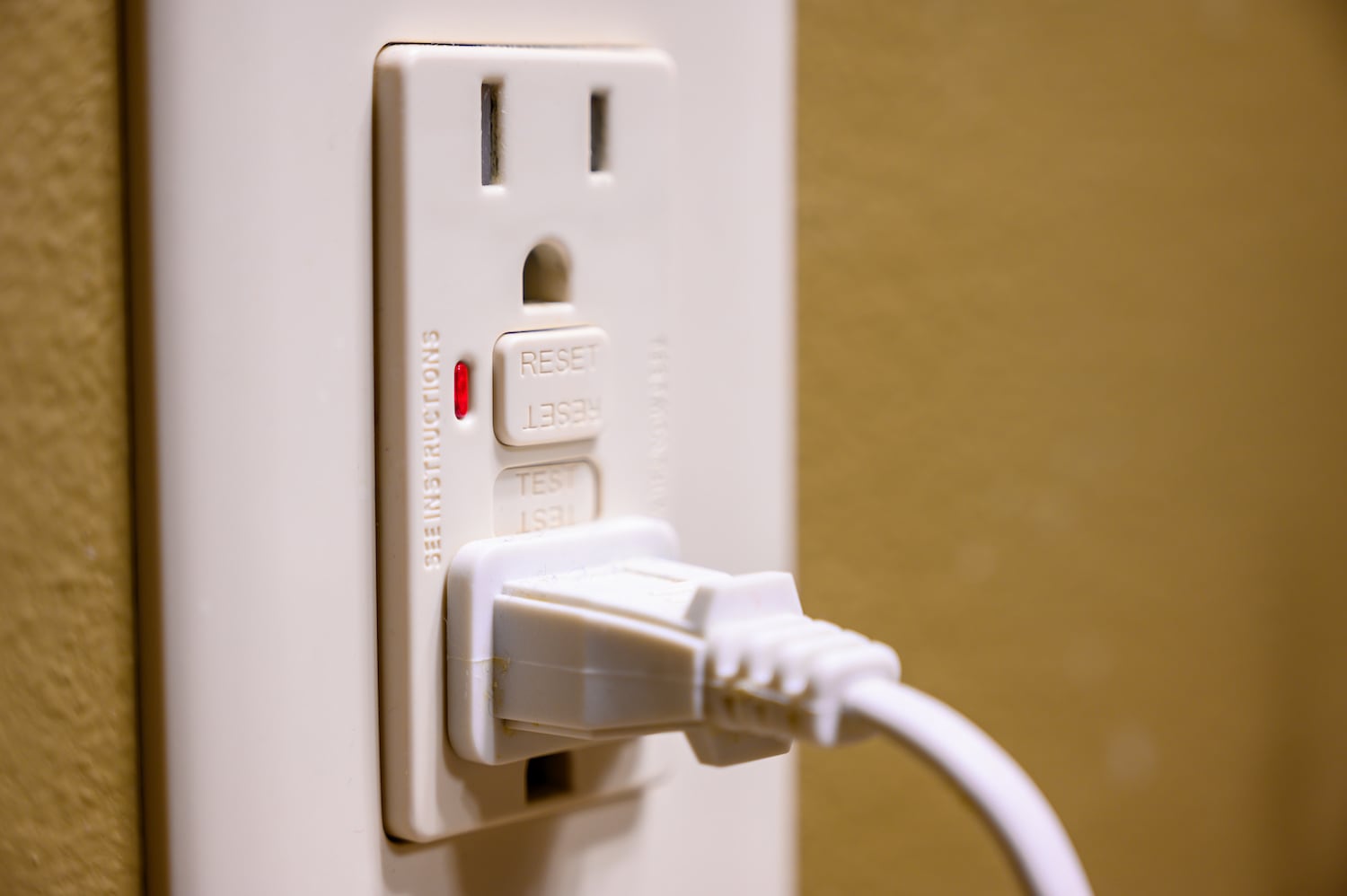


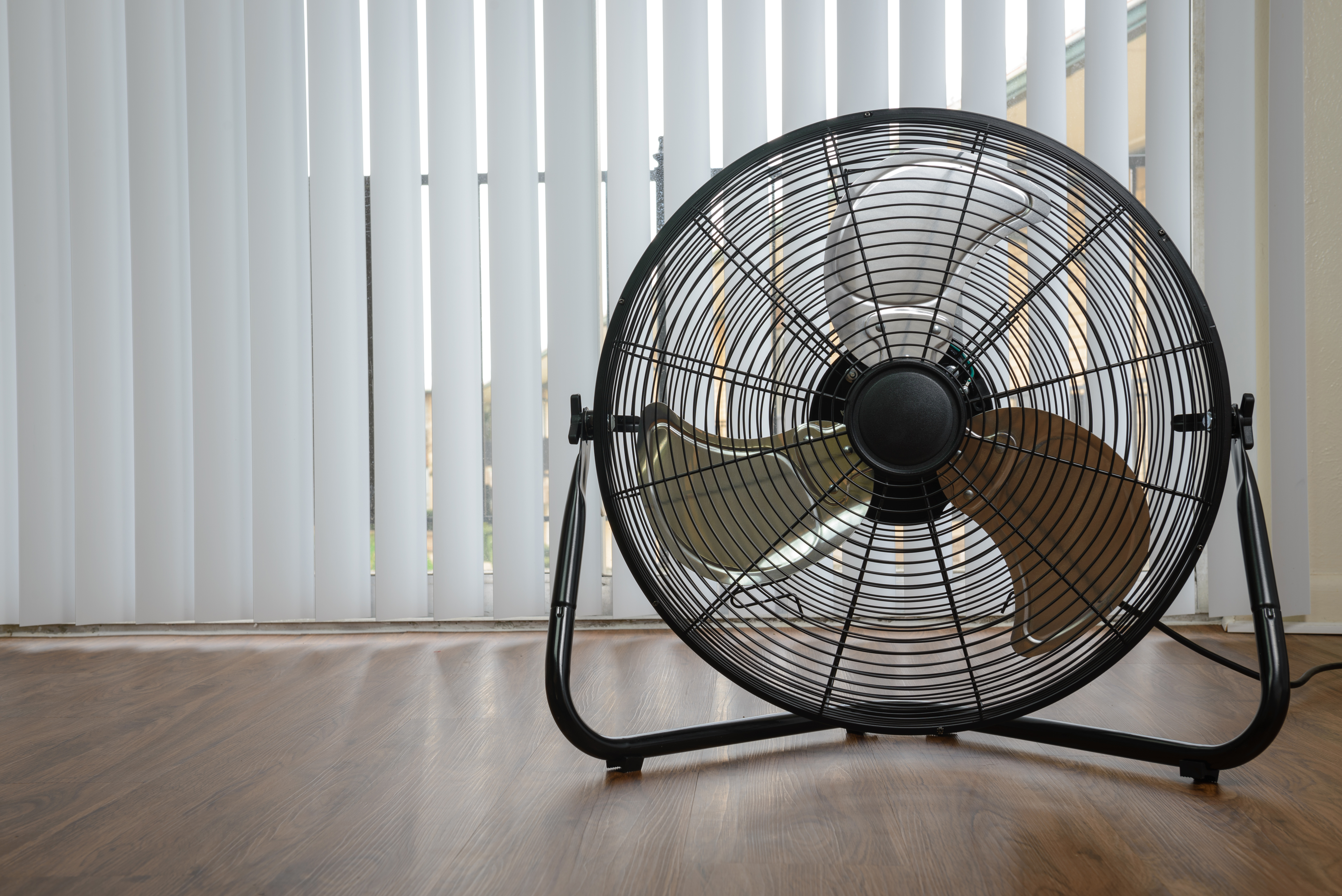
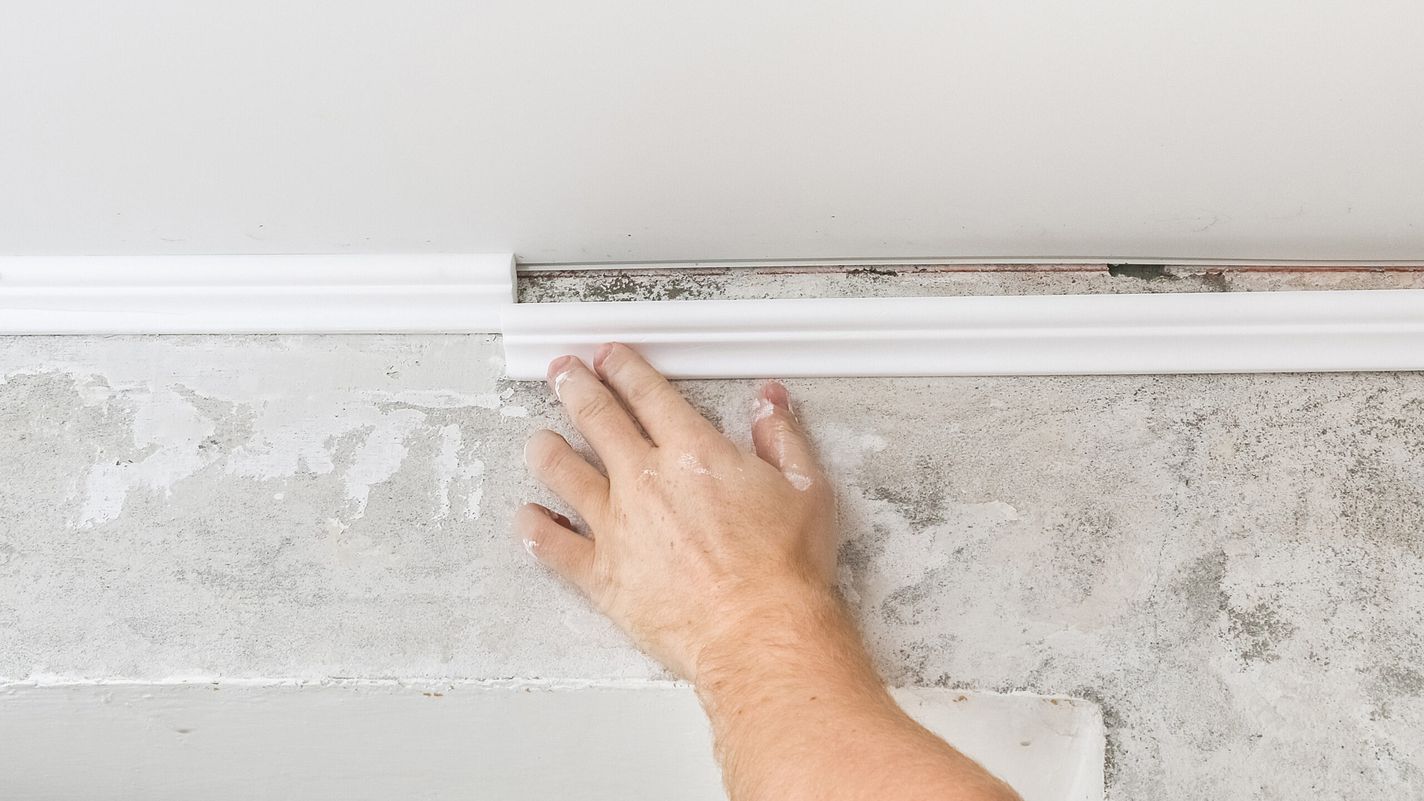
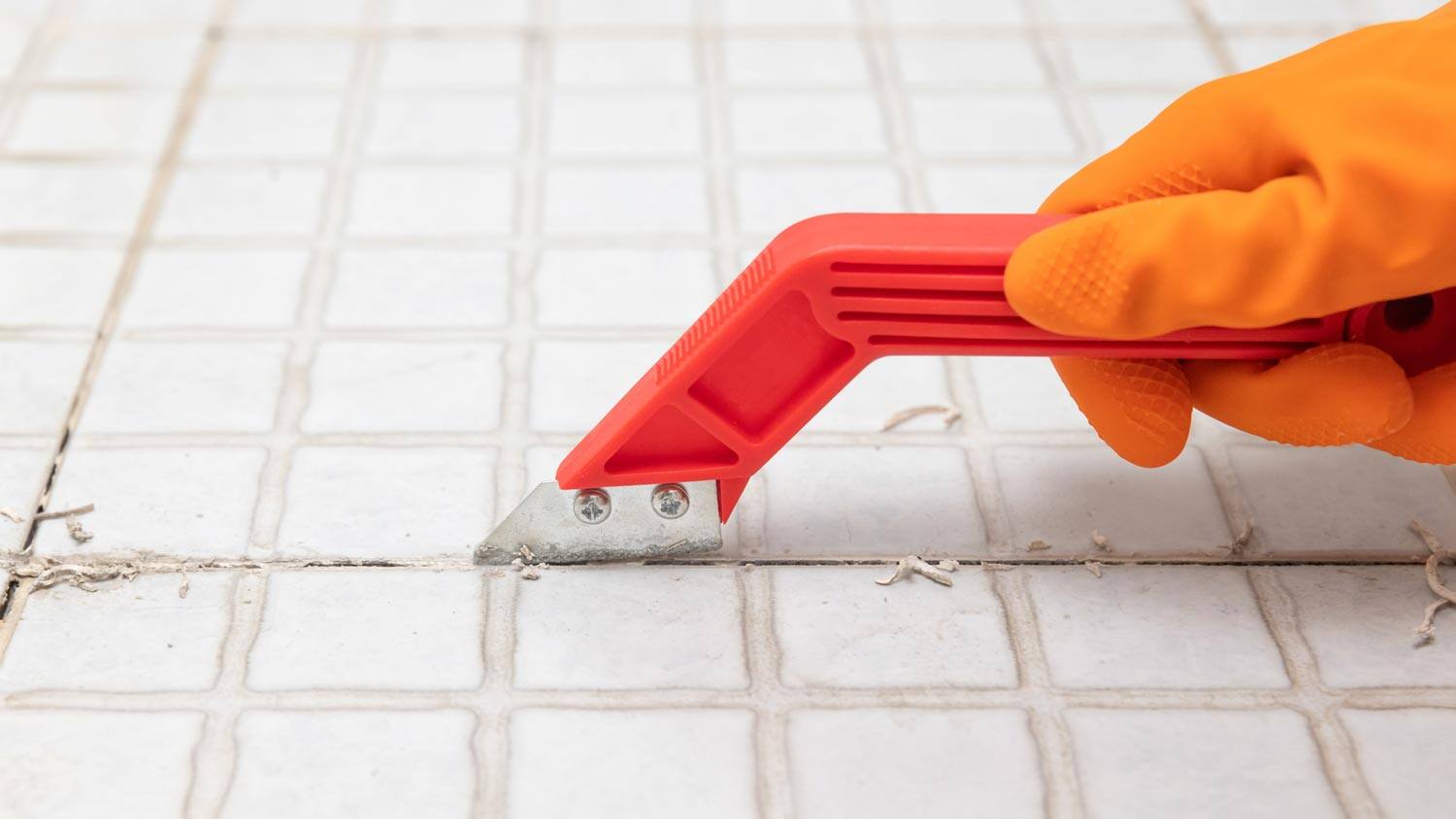


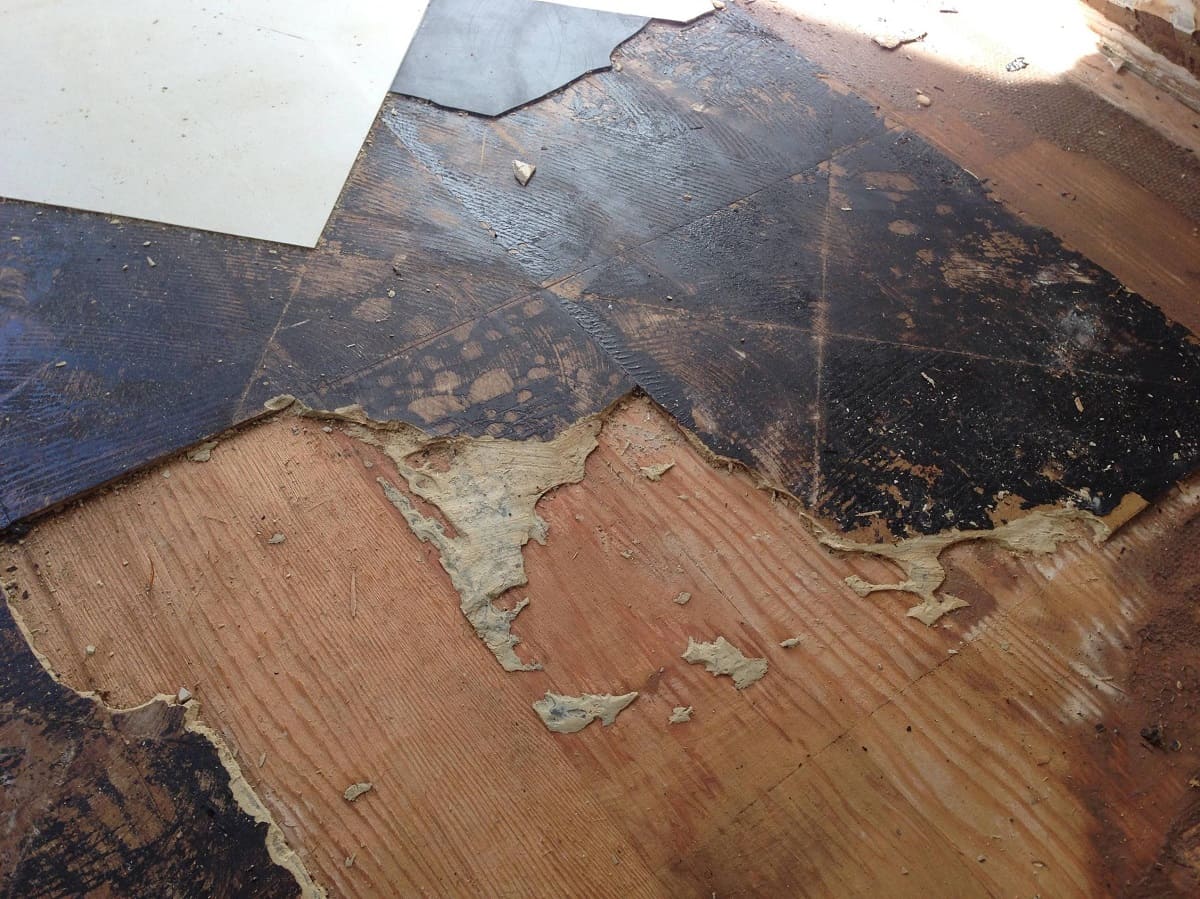

0 thoughts on “How High Are the Outlets From The Floor”